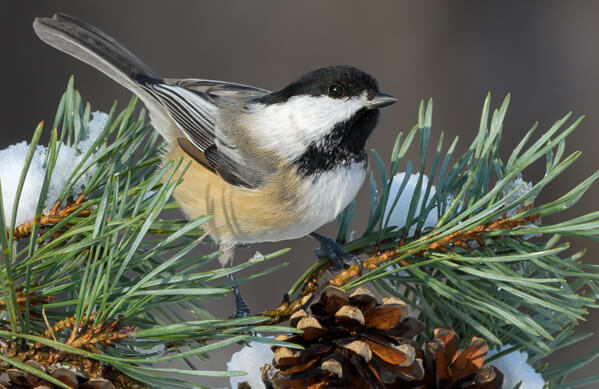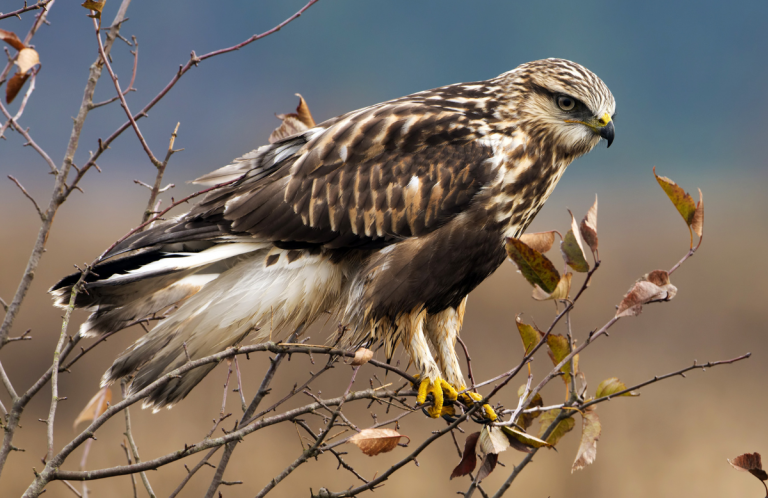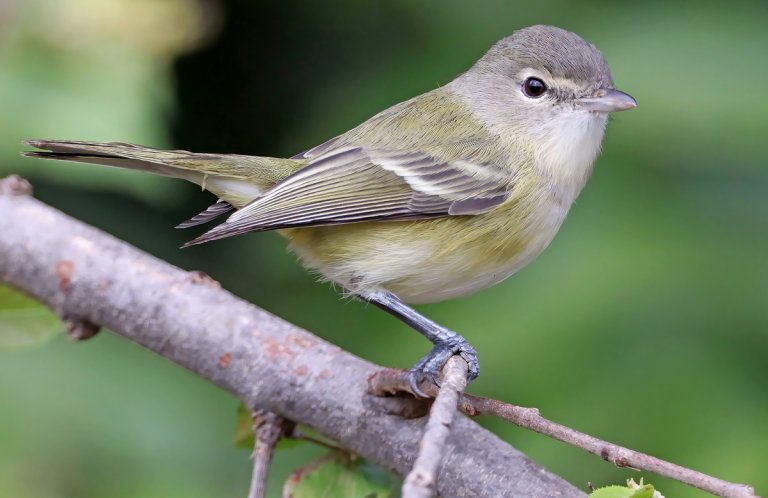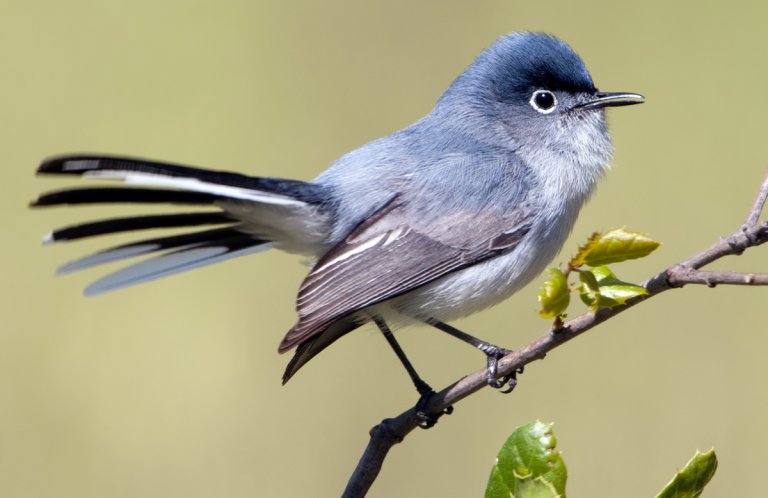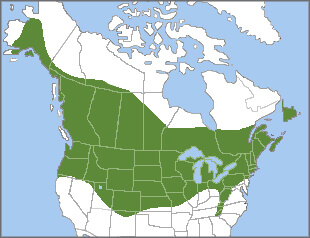
Black-capped Chickadee range (year-round).
The feisty Black-capped Chickadee is the most common and widespread of the seven chickadee species found in North America. Named for its call and trademark black cap, this little bird is a common sight at backyard bird feeders, along with species such as the Northern Cardinal, Pine Siskin, and American Goldfinch.
Remarkable Bird Brain
Each fall, Black-capped Chickadees gather and store large supplies of seeds in many different places – an adaptation that helps them to survive harsh winters. But how do they remember where they stash their supplies of seed?
Scientists have shown that Black-capped Chickadees are able to increase their memory capacity each fall by adding new brain cells to the hippocampus, the part of the brain that supports spatial memory. During this time, the chickadee's hippocampus actually expands in volume by around 30 percent! In the spring, when feats of memory are needed less, its hippocampus shrinks back to normal size. This phenomenon also occurs in other food-storing songbirds, including jays, nutcrackers, and nuthatches.
This remarkable plasticity is related to hormonal changes in the birds' brains. Scientists are studying this ability in the hopes of eventually helping humans suffering from memory loss.
Weathering the Winter
During extremely cold winter nights, this remarkable little bird shows another interesting ability: Like a Costa's Hummingbird or Rainbow-bearded Thornbill, it can lower its body temperature and enter short periods of torpor. This ability to go into controlled hypothermia helps it conserve essential energy. In addition, Black-capped Chickadees sometimes cluster together in tree cavities for extra warmth.
The Black-capped Chickadee has nine recognized subspecies and occurs from Alaska through the southern half of Canada and south to roughly half of the lower 48 U.S. states. All populations are nonmigratory, although some birds may move south within their range in the fall or winter.
Black-capped Chickadees live in small groups from late summer through winter, under a dominance hierarchy or "pecking order." Each bird is known to the other according to rank, which is determined by degrees of aggressiveness.
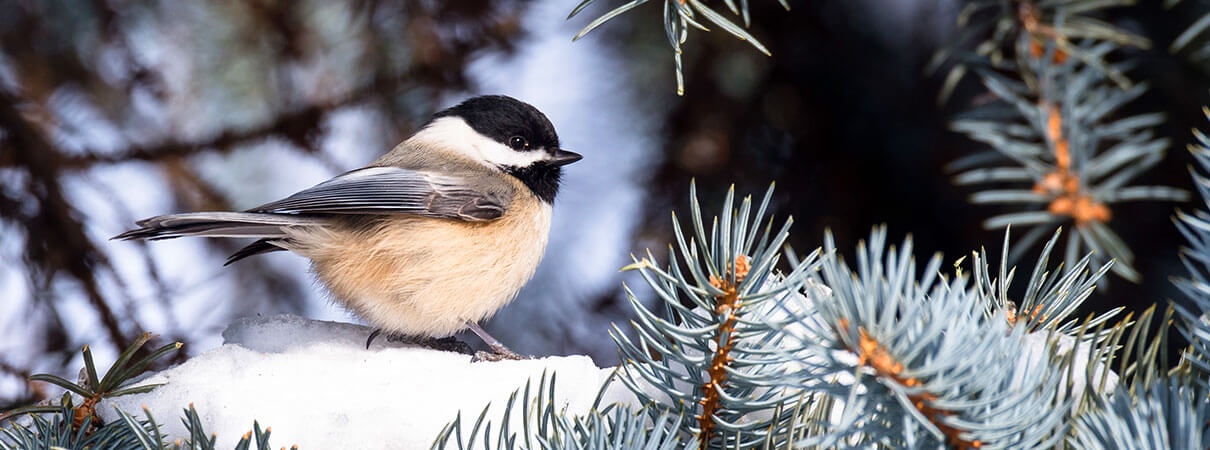
Black-capped Chickadee. Photo by FotoRequest, Shutterstock
Vociferous Vocalist
The Black-capped Chickadee's vocal repertoire is quite complex, with at least 15 different sounds that serve as contact calls, alarm calls, individual identification, territorial markers, or in recognition of a particular flock. They also call when they find food, to signal flock members. Other small birds, such as the Golden-crowned Kinglet and Brown Creeper, also listen for the Black-capped Chickadee's calls and follow them in search of food during the winter.
Listen to two of the many vocalizations of the Black-capped Chickadee below.
Typical "chick-a-dee-dee-dee" call:
(Audio of Black-capped Chickadee call by Thomas Magarian, XC464517. Accessible at www.xeno-canto.org/464517)
Song:
(Audio of Black-capped Chickadee song by Ted Floyd, XC352827. Accessible at www.xeno-canto.org/352827)
Feeding and Breeding
Black-capped Chickadees eat many insect and spider eggs, larvae, pupae, and nymphs. These adaptable little birds also consume berries, seeds, suet, and even bits of carrion, particularly in the winter when insects are scarce. They are commonly seen at bird feeders, and they can be tame, even learning to take seed from a human hand. In far-northern latitudes, Black-capped Chickadees are among the few small songbirds able to endure the long, snowy winters.
In spring and summer, these normally social birds split up into monogamous breeding pairs. Cavity nesters, they usually select a site in a decayed snag, branch, or knothole. They may also take advantage of old woodpecker holes or nest boxes. They prefer a side entrance to their nest cavities, and if the branch or snag they select is slanted, the chickadee places the entrance on the lower surface, providing protection from the elements.
Chickadees can excavate their own nest cavities in soft, dead wood, taking the wood chips away from the site to avoid attracting predators. Once the nest cavity is established, the female builds a cup-shaped nest of moss and bark at the bottom and lines it with softer material such as animal fur.
Adaptable, Yet Vulnerable
Like the American Robin and Downy Woodpecker, the Black-capped Chickadee seems to thrive in suburban habitats. Although it remains common, this bird faces the same threats as less-adaptable species, particularly predation by cats and collisions with glass.
Fortunately, ABC has a number of programs in place to tackle these threats, including our Cats Indoors program, which encourages pet owners to keep cats and birds safe, and our Glass Collisions program, which offers solutions to keep birds from hitting windows.
Donate to support ABC's conservation mission!





































